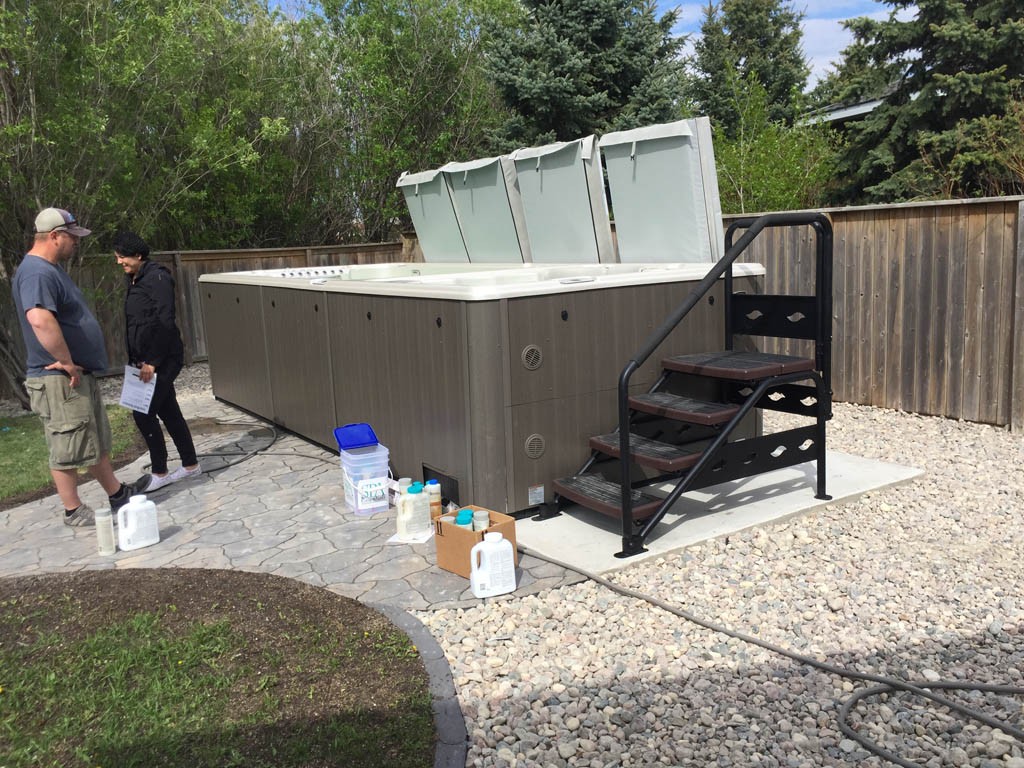How to Ensure a Strong, Level, and Long-Lasting Hot Tub Foundation
Installing a hot tub is a big investment, and the foundation you place it on is just as important as the hot tub itself. A poorly installed pad can lead to sinking, cracking, or even damage to your spa. To help you avoid costly repairs, here are five common mistakes people make when installing a hot tub pad—and how to do it the right way.
1. Not Excavating and Leveling the Ground Properly
✅ The Mistake:
Many homeowners assume they can just place a hot tub on an existing patio, deck, or even the ground. However, uneven ground or a lack of proper excavation can lead to an unstable foundation, causing the tub to shift over time.
🔨 The Fix:
- Always excavate the ground before installation to remove soft soil and roots.
- Use a laser level to ensure a perfectly even base.
- Compact the soil before adding gravel or pouring concrete.
📌 Why It Matters: A level pad prevents water pooling, structural strain, and long-term damage to your hot tub.
2. Choosing the Wrong Type of Base
✅ The Mistake:
Not all surfaces are suitable for supporting a heavy hot tub. Placing a hot tub directly on dirt, grass, or weak pavers can lead to sinking and instability.
🔨 The Fix:
- Concrete Pads – The best long-term option for permanent installations. A reinforced concrete pad with a broom finish is durable, slip-resistant, and built to handle weight.
- Gravel Pads – A good alternative for budget-conscious homeowners. However, it must be properly compacted and leveled to prevent sinking.
- Decking – If placing a hot tub on a deck, ensure it is structurally reinforced to handle the weight.
📌 Why It Matters: The right base ensures your hot tub stays level and secure for years to come.
3. Using Too Thin or Weak Concrete
✅ The Mistake:
Pouring a thin layer of concrete (less than 4 inches thick) can result in cracking, shifting, or even breaking under the weight of the hot tub, water, and people inside.
🔨 The Fix:
- Always pour at least 4 to 6 inches of high-strength concrete (3,500+ PSI).
- Use rebar or wire mesh reinforcement to prevent cracking.
- Apply a broom finish for a non-slip surface.
📌 Why It Matters: A properly reinforced concrete pad prevents cracks and movement from heavy loads and freeze-thaw cycles in Ontario’s climate.
4. Ignoring Drainage & Water Runoff
✅ The Mistake:
Improper drainage can lead to water pooling around your hot tub, which may cause erosion, shifting, or even electrical hazards.
🔨 The Fix:
- Ensure the pad has a slight slope (⅛ inch per foot) to direct water away.
- Install gravel or a French drain around the edges of the pad to improve drainage.
- Avoid placing the hot tub in a low-lying area where water naturally collects.
📌 Why It Matters: Proper drainage prevents erosion, water damage, and slipping hazards around your hot tub.
5. Not Planning for Electrical & Accessibility Needs
✅ The Mistake:
Many homeowners install a hot tub pad before considering the electrical setup, only to realize later that it’s too far from a power source or that conduit needs to be run.
🔨 The Fix:
- Plan for electrical access before installation—most hot tubs require a dedicated 220V GFCI circuit.
- Work with a licensed electrician to ensure safe wiring.
- Leave enough space around the hot tub for easy maintenance and cover removal.
📌 Why It Matters: A well-planned installation prevents costly electrical modifications and ensures ease of use.
Final Thoughts: Get It Right the First Time
Installing a hot tub pad isn’t just about pouring concrete or spreading gravel—it’s about creating a stable, level, and long-lasting foundation for your spa. By avoiding these common mistakes, you’ll ensure your hot tub stays in place, functions properly, and remains a relaxing retreat for years to come.
Need a Hot Tub Pad Installed by Professionals?
We specialize in hot tub, swim spa, and custom concrete pad installations across Ontario. Whether you need a reinforced concrete pad or a properly compacted gravel base, we ensure a flawless, long-lasting installation.



